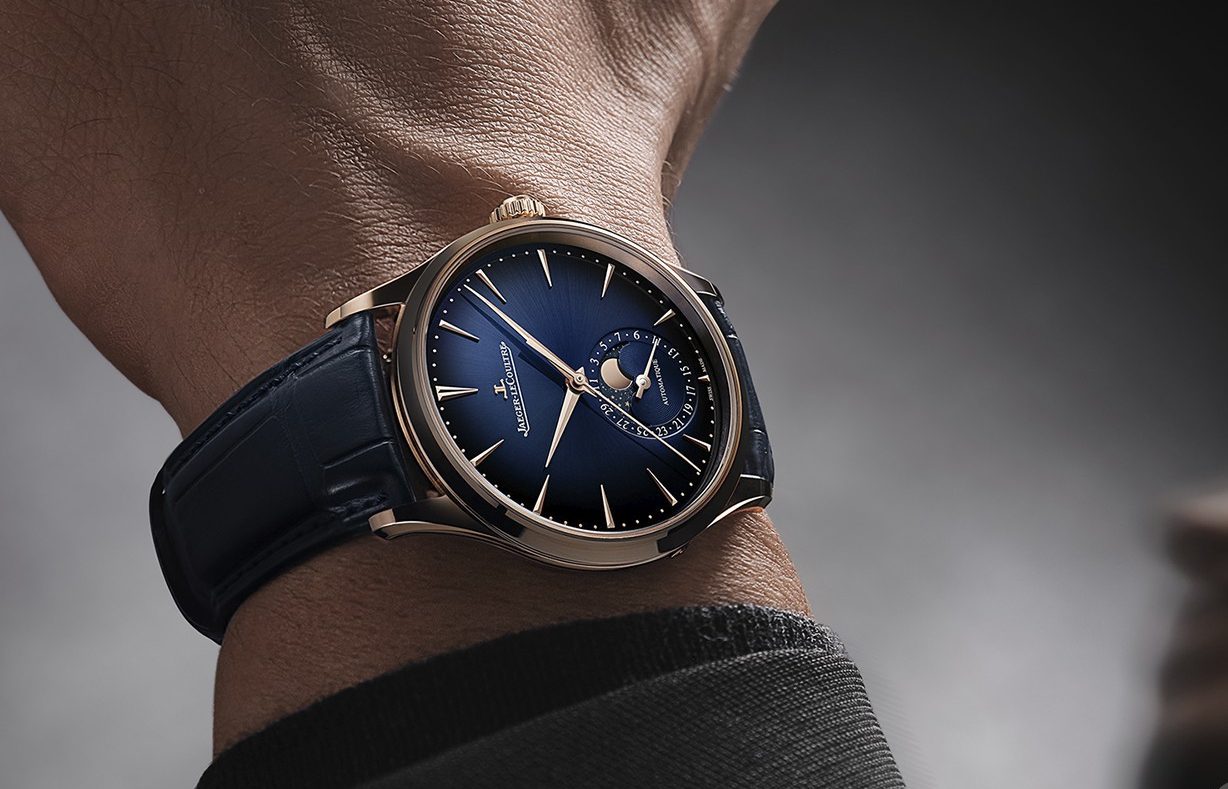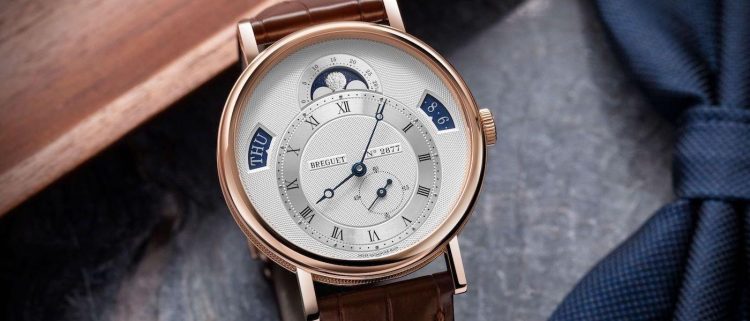Introduction: A Battle of Innovation and Craftsmanship
In the prestigious world of luxury watchmaking, Jaeger-LeCoultre and Breguet are two names that stand as symbols of precision, craftsmanship, and innovation. Both companies have centuries of history, creating some of the most iconic and complex timepieces ever made. Yet, when it comes to the technology and mechanical advancements that define their watches, which of these two legends truly leads the charge?
This article aims to dive deep into the technological innovations, mechanical achievements, and horological complexities of Jaeger-LeCoultre and Breguet, offering a detailed comparison of how both brands continue to evolve and push the boundaries of traditional watchmaking. By analyzing their cutting-edge movements, complications, and unique patents, we’ll uncover which brand has mastered the art of merging timeless craftsmanship with modern technology.
Chapter 1: A Legacy of Innovation – Jaeger-LeCoultre’s Technological Achievements
1.1 The Watchmaker’s Watchmaker
Jaeger-LeCoultre, known as the “watchmaker’s watchmaker”, has been a leader in innovative movement technology for over 180 years. Founded in 1833 by Antoine LeCoultre in Le Brassus, Switzerland, the brand has been at the forefront of complicated watchmaking and has pioneered numerous technological advancements in the field. Jaeger-LeCoultre is renowned for creating some of the most complex and sophisticated movements in the industry, consistently blending tradition with innovation.
1.2 Iconic Movements and Breakthrough Technologies
Jaeger-LeCoultre’s history is defined by its ability to create revolutionary movements that push the limits of what is technically possible. Here are a few of their most groundbreaking achievements:
- Caliber 101: In 1929, Jaeger-LeCoultre created the Caliber 101, the world’s smallest mechanical movement. Weighing just 1.98 grams and measuring only 14 mm in length, this tiny movement paved the way for ultra-compact watches, like the Reverso and Alta Moda collections. Despite its tiny size, the Caliber 101 is a work of mechanical mastery, capable of achieving exceptional precision in a small package.
- Reverso: The Jaeger-LeCoultre Reverso, first launched in 1931, revolutionized the concept of the reversible watch. Originally created for polo players, the watch features a flip case that protects the dial from impacts. Over the years, Jaeger-LeCoultre has incorporated several innovations into the Reverso, including dual time-zone functionality and mechanical movements like the minute repeater and tourbillon.
- Duomètre: The Duomètre collection, introduced in 2007, represents a true breakthrough in watchmaking technology. The Dual-Wing system, which separates the movement’s power source for the time and complications, enhances the accuracy and performance of the watch. This innovative movement allows the wearer to enjoy the complications of a chronograph, power reserve indicator, and dual time zone, all while maintaining exceptional precision.
- Master Control: The Master Control series epitomizes technical excellence and precision. With movements that are all rigorously tested for accuracy through the 1000-hour test (which includes a series of 1000 hours of continuous operation), Jaeger-LeCoultre has built a reputation for offering some of the most reliable and accurate timepieces available today. The Master Chronograph and Master Ultra Thin collections, in particular, showcase the brand’s commitment to refined mechanical innovation.
- Gyrotourbillon: Another impressive advancement from Jaeger-LeCoultre is the Gyrotourbillon, a revolutionary multi-axis tourbillon that compensates for the effects of gravity on the accuracy of the movement. This technological achievement ensures that the watch maintains superior timekeeping performance regardless of the angle in which it’s held, making it a masterpiece of precision engineering.
1.3 In-House Movements and Manufacturing Capabilities
Jaeger-LeCoultre’s commitment to in-house movement production allows the brand to maintain strict quality control over every aspect of its watches. The manufacture produces its own escapements, balance wheels, bridges, and other components, ensuring the highest standards of craftsmanship and precision. Their extensive movement collection, which includes everything from simple time-only watches to the most complex complications, is a testament to their technological ingenuity and manufacturing expertise.
1.4 Jaeger-LeCoultre’s Innovations in Design and Functionality
Beyond movements, Jaeger-LeCoultre has also made significant strides in watch design. The company has introduced a variety of functional features that enhance the usability of their watches, such as:
- Atmos Clock: The Jaeger-LeCoultre Atmos Clock, which runs without any external energy source, utilizes changes in temperature and atmospheric pressure to power the clock, making it a marvel of energy conservation. This innovative mechanism allows the clock to run continuously for years on a single energy cycle.
- Ceramic and Metal Combinations: Jaeger-LeCoultre has experimented with new materials, such as high-tech ceramics, in combination with precious metals, to create incredibly durable yet elegant timepieces. The Polaris collection and Master Control Chronograph feature cases made from titanium or ceramic, offering a unique combination of lightweight construction and robust durability.

Chapter 2: Breguet’s Pioneering Technological Legacy
2.1 The Origins of Breguet’s Technological Mastery
Founded by Abraham-Louis Breguet in 1775, Breguet’s legacy is deeply intertwined with the development of modern horology. Known for his pioneering work in the realm of complications, innovation, and luxury watchmaking, Breguet is credited with the creation of numerous horological advancements that continue to shape the industry today.
2.2 Iconic Movements and Breakthrough Technologies
Breguet’s reputation for technological innovation and complicated movements began with Abraham-Louis Breguet himself, who was instrumental in developing some of the most significant advancements in watch technology. Here are a few of the brand’s major achievements:
- Tourbillon: One of Breguet’s most famous contributions to watchmaking is the invention of the tourbillon in 1795, a mechanism designed to counteract the effects of gravity on a watch’s accuracy. The tourbillon remains one of the most coveted complications in horology, and Breguet’s versions are known for their technical sophistication and elegance. Breguet continues to innovate with the tourbillon, developing self-winding tourbillons and multi-axis tourbillons that improve the accuracy and performance of their timepieces.
- Perpetual Calendar: Another groundbreaking innovation from Breguet is the perpetual calendar, which automatically adjusts for varying month lengths and leap years. This complexity, which has been a hallmark of Breguet’s offerings, remains a highly sought-after feature for those who appreciate mechanical artistry and practicality.
- The Breguet Marine Chronograph: The Marine Chronograph collection showcases Breguet’s excellence in chronograph technology. The self-winding movement and high-frequency oscillation of Breguet’s chronographs ensure unmatched precision, even in extreme conditions. The Marine collection is highly praised by enthusiasts for its rugged durability paired with luxury aesthetics.
- Silicon Components: Breguet has been a pioneer in using silicon components in its movements, particularly in the balance spring and escape wheel. The introduction of silicon has allowed Breguet to improve the performance and longevity of its movements while reducing the wear and tear caused by friction. This is a prime example of Breguet’s commitment to integrating modern materials into traditional watchmaking.
2.3 In-House Movements and Manufacturing Capabilities
Like Jaeger-LeCoultre, Breguet prides itself on producing most of its movements in-house. The brand’s manufacture is known for its precision engineering and commitment to creating exceptionally complicated movements. Each watch is meticulously crafted using state-of-the-art technology, with components that are hand-finished to ensure the highest levels of quality and performance.
Breguet’s haute horlogerie expertise shines through in its complex movements, such as the Caliber 558, which incorporates a self-winding movement with tourbillon, perpetual calendar, and chronograph. The company also produces highly complicated minute repeaters and skeletonized watches that showcase their expertise in both mechanical artistry and technical precision.
2.4 Design Innovations and User-Centered Technologies
In addition to their mechanical prowess, Breguet has introduced several innovative design features that enhance the user experience:
- Breguet’s Unique Breguet Hands: One of the most distinctive elements of a Breguet watch is its “Breguet hands”, a signature design feature that’s both aesthetically pleasing and functional. These hands are made from gold and have a unique open-loop design that makes them easy to read and visually striking against the dial.
- Anti-Reflection Sapphire Crystals: Breguet watches feature sapphire crystals that are coated with anti-reflective treatments, ensuring exceptional readability in various lighting conditions. The crystal’s optical clarity makes Breguet’s watches perfect for those who appreciate precision and functionality without sacrificing beauty.
Conclusion: The Final Verdict – Who Takes the Lead in Watchmaking Technology?
Both Jaeger-LeCoultre and Breguet have made remarkable contributions to the world of watchmaking, each with its own technological focus and innovations. Jaeger-LeCoultre excels in versatility, with an unmatched ability to create diverse movements ranging from simple timepieces to highly complicated watches like the Duomètre and Gyrotourbillon. Their modern innovations, such as the Dual-Wing system and Caliber 101, show an eagerness to push the boundaries of micro-mechanics.
On the other hand, Breguet shines as the pioneer of some of the most important horological advancements in history, including the tourbillon, perpetual calendar, and use of silicon components. The brand’s focus on elegance, luxury, and technical mastery makes it a leader in the field of complicated watchmaking.
When it comes down to it, the choice between Jaeger-LeCoultre and Breguet may depend on your preferences for modern technological innovation versus historical craftsmanship. Both brands offer exceptional quality and cutting-edge technology, but Jaeger-LeCoultre may appeal more to those who seek versatility and modern design, while Breguet may be more suited to those who value traditional complications and elegant design.
Ultimately, whichever brand you choose, you’re investing in a timepiece that represents the very best in Swiss watchmaking technology.





































